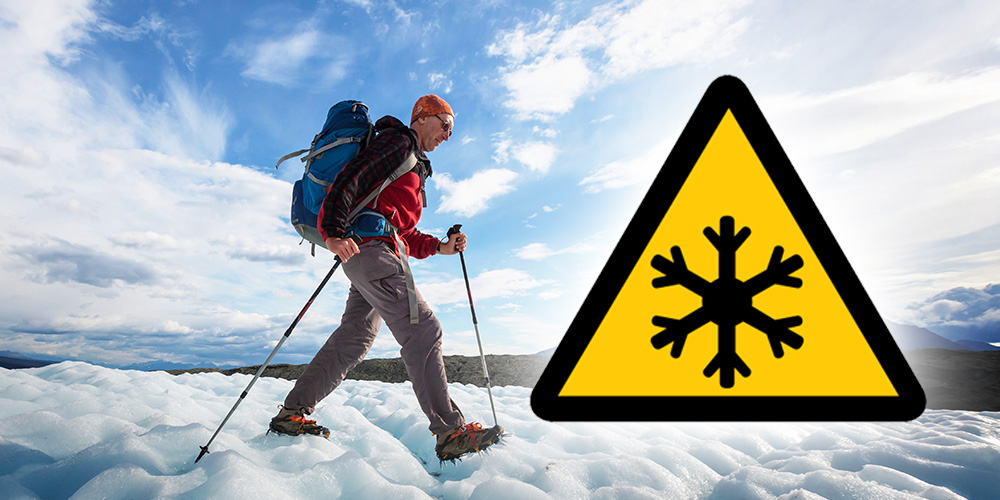
The growing popularity of extreme sports and travel to far flung locations has spawned a generation of adventurers who are inclined to engage in risky expeditions. As such, these dauntless individuals are subject to an endless array of one-of-a-kind injuries that often occur far from a basic first aid station, let alone a Level I Trauma Center. As a result, the demand for medically trained professionals who can effectively treat these unique situations in the field has inspired a relatively new medical specialty called wilderness medicine. A subset of similarly adventurous physicians have heeded the call of the wild and been trained to handle injuries that range from the mundane to the life threatening – in a multitude of exotic settings. Nowadays, many outfitters and tour companies routinely hire doctors who are versed in wilderness medicine to take care of their clients while they engage in these potentially perilous activities.
Most people who enjoy outdoor sports, however, are not accompanied by a medical professional. Therefore, it is important to be familiar with proper protocol regarding some of the basic injuries that can occur in the field. Activities like hiking, camping and rock climbing attract enthusiasts of all ages, skill levels and body types, which means unexpected injuries. Because chilly weather is a often a factor when it comes to these pursuits, cold related illness is of paramount concern.
OutdoorEd.com defines a “cold challenge” as entering an environment that is cooler than your body temperature. It goes on to explain that if your heat production and heat retention are greater than the challenge, then your body temperature should be able to regulate itself properly. Conversely, if the challenge is greater than your body heat and ability to retain it, then you are vulnerable to hypothermia (the process by which the body loses heat faster than it can create it) and frostbite.
Because weather conditions can change abruptly without warning, recognizing the signs of frostbite and knowing how to treat it can be the difference between losing (or saving) a finger or an ear in sub-freezing temperatures. Frostbite can occur in as little as thirty minutes if it’s cold enough. Over two hundred thousand incidences occur each year in the United States alone, with ninety percent of cases involving the hands and feet. Noses, ears and cheeks are also highly susceptible because they tend to be exposed during these activities.
Frostbite generally advances through three stages. The first stage is called frostnip, and is easily identified by prickly or numb feelings in the affected area. The skin can appear either pale or reddish. This isn’t a serious condition and doesn’t cause any lasting damage. If left to progress, however, superficial frostbite can occur. At this point, crystals may begin to form in the affected area. This may be accompanied by swelling and a burning sensation. If untreated, the potential for severe frostbite is very high. This is a serious situation, involving all layers of the skin. Numbness or loss of sensation will occur and possibly result in the blackening, hardening and death of that body part.
If any of the above symptoms occur, it is important to take immediate action to stop the condition’s progression – with this extremely important exception: If there is a chance that the thawed area could possibly freeze again, then it must not be treated in the field. Re-freezing can cause more complications, further threatening the survival of that body part.
If the likelihood of getting to the hospital in a timely fashion is very high, then treatment in the field is indicated. If possible, place the affected area in the armpit or groin area of a companion. Thawing in water that ranges from 98.6 degrees Farenheit to 102.2 degrees Farenheit is recommended, but must be monitored carefully so as to avoid thermal injury. Do not apply direct heat or massage the area. If crystals have formed, rubbing can cause cell damage. Blisters containing milky or clear fluid can be lanced and drained if they are on the verge of rupturing, but should be left alone otherwise. Blood blisters should not be aspirated in the field. Finally, unless it is life threatening, one should never walk on frostbitten feet. Taking proper precautions when venturing outdoors is critical when it comes to avoiding frostbite, but if properly triaged, recovery is possible.
To learn more about wilderness medicine, listen to this week’s episode of Weekly Infusion Podcast. Dr. Luanne Freer, founder of EverestER (the hospital at the base of Mount Everest), talks about her experiences in the field.
Some of the links on this website are affiliate links, and as an Amazon Associate, we may earn an affiliate commission from qualifying purchases – at no cost to you.
This website is for informational and/or entertainment purposes only and is not a substitute for medical advice, diagnosis, or treatment.
© 2025 Drew Pinsky Inc. | All Rights Reserved
Get alerts from Dr. Drew about important guests, upcoming events, and when to call in to the show.
For text alerts, msg and data rates may apply